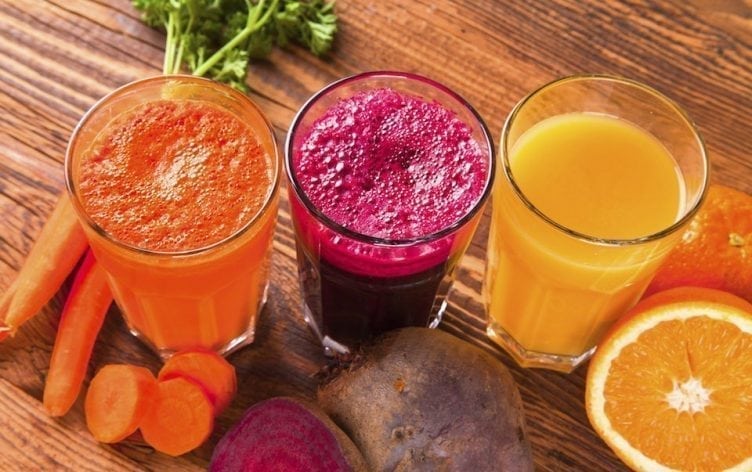
As the “juice” category expands to include a whole range of healthy (and unhealthy) products, it’s getting harder and harder to know what you’re actually getting when you’re looking to sip your fruit and veggies.
Especially when many of the terms companies slap on their labels are still highly unregulated. Fresh, fresh-pressed, fresh-squeezed, raw, non-HPP—it’s headache inducing.
Chief among them is the term “cold-pressed,” which first and foremost refers to how the juice was extracted from the fruit and veggies. We explain it further, along with few other key terms and helpful factoids that green-juice-lovers might want to know:
1. Within the new era of high-end juice companies, there are two basic ways to juice—centrifugal and cold-pressed
Centrifugal juicers use a fast-spinning blade to extract juice from produce, while cold-pressers use a slow pulverizer and a hydraulic press.
Most bottled juice brands that have become popular in the past few years, like BluePrint and Juice Press to Suja and Pressed Juicery, are cold-pressing their juices.
If you get a green juice made-to-order in front of you at a juice bar, it’s most likely made using a centrifugal machine. If you grab a bottled green juice from the refrigerator at one of these companies, it was probably cold-pressed off-site.
(That does not mean your bottled supermarket Tropicana is cold-pressed. Cold-pressing is a specialized process largely used by the new wave of healthy, high-end juice bars. It has more in common with making Swiss watches than fruit-mashing oranges into a carton.)
2. The way the two types of machines work is super important
Why? Nutrient quality and freshness, experts say.
There are factors that could influence how many of the vitamins, minerals, and enzymes from the spinach and kale you’re sipping are actually making it into your mouth.
In centrifugal juicing, the super-fast blades generate some heat, which can destroy enzymes. The process also forces air in, starting the oxidation process before the juice is even done, which can further compromise nutrients.
The cold-pressing process does not generate heat, and may also be better at extracting all of the enzymes from the produce’s fiber, since it’s slow and deliberate. (There isn’t much research yet on these issues, though.)
So overall, you’ll most likely get more intact nutrients from cold-pressed juice. And if you’re not going to drink it on the spot, you should definitely choose the super-sealed, cold-pressed and bottled variety.
That said, Juice Generation founder Eric Helms, like many juice moguls, says lots of his customers prefer made-to-order centrifugal juices for their fresh taste and feel. “They can choose their own ingredients, and we can customize it to their taste,” he says, “and many people like seeing it being made.” (Guilty!)
3. There are other considerations, like time, money, and how long your juice will keep
The other benefit to centrifugal juicing is ease. “It’s less expensive, quick, convenient, and easier to clean up, too,” Helms says, which explains why made-to-order juice bars choose it (you’d miss your meeting if they were cold-pressing on site), and may also be a consideration if you’re thinking of making juice at home.
If you do choose cold-pressed, the trickiest aspect comes with a new(ish) process called HPP. Only some companies are using to make it possible for them to preserve bottled juices for up to three weeks. Check back soon for a full update on that issue—once your body has fully absorbed this one. —Lisa Elaine Held for Well+Good
Are you a fan of “cold-pressed” juice? What are your thoughts on juicing? Share in the comments below!



